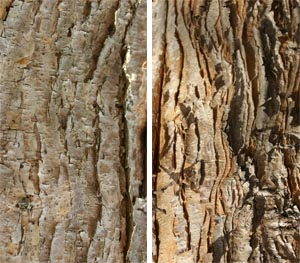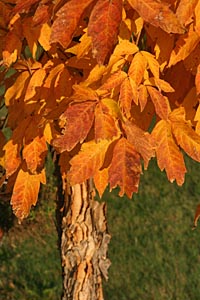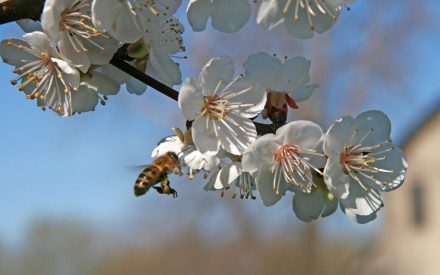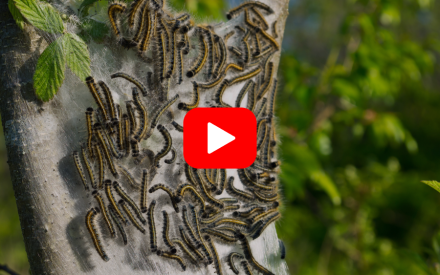Three flowered maple, Acer triflorum, is an nice specimen tree with multiseason interest for small gardens. Native to hills of northern China (Manchuria) and Korea, this small deciduous tree has a slow to moderate growth rate, getting about 15 feet tall in ten years. It will eventually grow up to 25 feet tall with a 20-25 foot spread. Its form depends on the conditions it is growing under, remaining rounded and compact in full sun, but more upright and spreading when in shade. This species can be be grown as a large shrub instead of a tree as it branches low. It has a fine to medium texture and is densely branched, casting a dense shade. This relatively rare plant is well adapted to tough conditions and makes a good point of interest in any landscape. It is hardy in zones 4-9.

The trifoliate leaves (three leaflets) with irregularly serrated margins emerge a nice emerald green in spring. The leaflets are all about the same size, 2-3″ long, and remain a clean, dark green throughout the summer. Fall is when they really shine, creating a dazzling display in brilliant yellow orange to flame-orange, with hints of apricot, scarlet, purple and gold. Three flowered maple is one of the few trees to dependably develop good fall color in shade (although it will be more subdued than in full sun).

As its name suggests, the flowers are produced in clusters of three. The greenish-yellow blooms in early spring are quite inconspicuous and like in other maples are followed by a paired winged fruit (samara). These may persist into winter.

Another ornamental feature of this species is the grayish to warm, brown exfoliating bark. The bark becomes furrowed and peeling even at an early age. The bark comes off vertically in heavy strips or woody flakes (not in papery pieces), leaving behind a dark, knobby trunk that is especially decorative in winter. This attribute has given the plant another common name of roughbark maple.
Three flowered maple prefers acidic, well-drained soil in partial shade but in the northern part of its range it can easily be placed in full sun. It is also quite adaptable and tolerates other types of soil as well but does not like compacted or wet soils. It is somewhat drought tolerant once established. It has few insect or disease problems (although can be affected by

Verticillium wilt like many other maples) and makes a good street tree as its roots are not very aggressive and will not damage sidewalks or patios. It may have slight die back of new growth during unusually cold winters. This maple is best transplanted in spring or early fall; avoid planting in the summer.
The species was first described in 1901 and was first introduced to cultivation in 1923. It was awarded the Pennsylvania Horticultural Society Gold Medal in 1996 and was a 2004 Great Plant Pick and a 2008 Cary Award winner. But because of difficulty in propagation (seed viability is low and seeds require a double dormancy of both warm and cold periods; cuttings are not easy to root), it is not readily available and therefore rarely seen in cultivation. Paperbark maple (Acer griseum) is another small maple with trifoliate leaves and ornamental bark but its fall color is not as impressive as A. triflorum.
– Susan Mahr, University of Wisconsin – Madison
Latest from Wisconsin Yard & Garden
Ask Your Gardening Question
If you’re unable to find the information you need, please submit your gardening question here:





 What’s All the Buzz? Woody Plants for Bees, Butterflies, and Other Bee-t-full Pollinators
What’s All the Buzz? Woody Plants for Bees, Butterflies, and Other Bee-t-full Pollinators ▶︎ Watch: Hydrangeas: Know Them and Grow Them
▶︎ Watch: Hydrangeas: Know Them and Grow Them Promoting Urban Forestry: Planting Bareroot Trees in Home Landscapes
Promoting Urban Forestry: Planting Bareroot Trees in Home Landscapes ▶︎ Watch: Torching Tent Caterpillars
▶︎ Watch: Torching Tent Caterpillars


